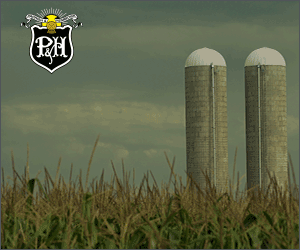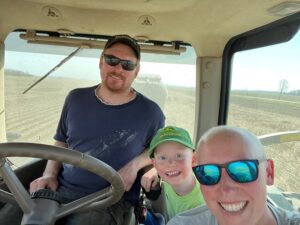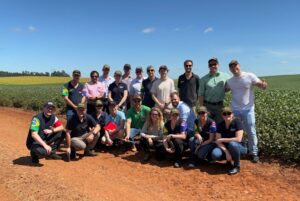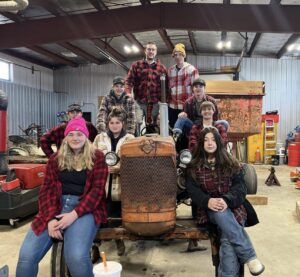Field Observations
SUMMER 2024
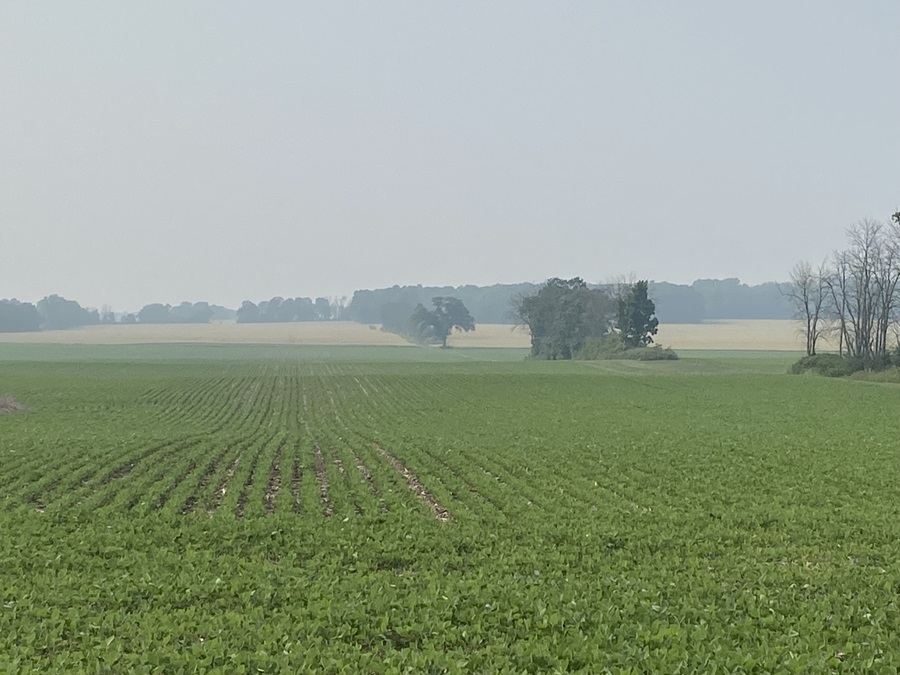
June 27, 2024
The first few days of the summer season were warm, leading to rapid crop development and crop heat unit (CHU) accumulation. From June 17 to June 23, 2024, in Elora, 206 CHUs were accumulated compared to the 54-year average of 176; other areas of the province are also showing greater than average accumulations, as can be expected with temperatures exceeding 35 degrees Celsius.
Corn and soybean development continues as winter wheat harvest nears for the deep southwest of the province.
Corn
With the heat last week, corn motored along, reaching knee-high well before the first of July (with some corn at waist-high), with others close behind. There is still a high degree of variability in crop staging across the province from V1 to V9 (8 leaf). Side dressing is occurring.
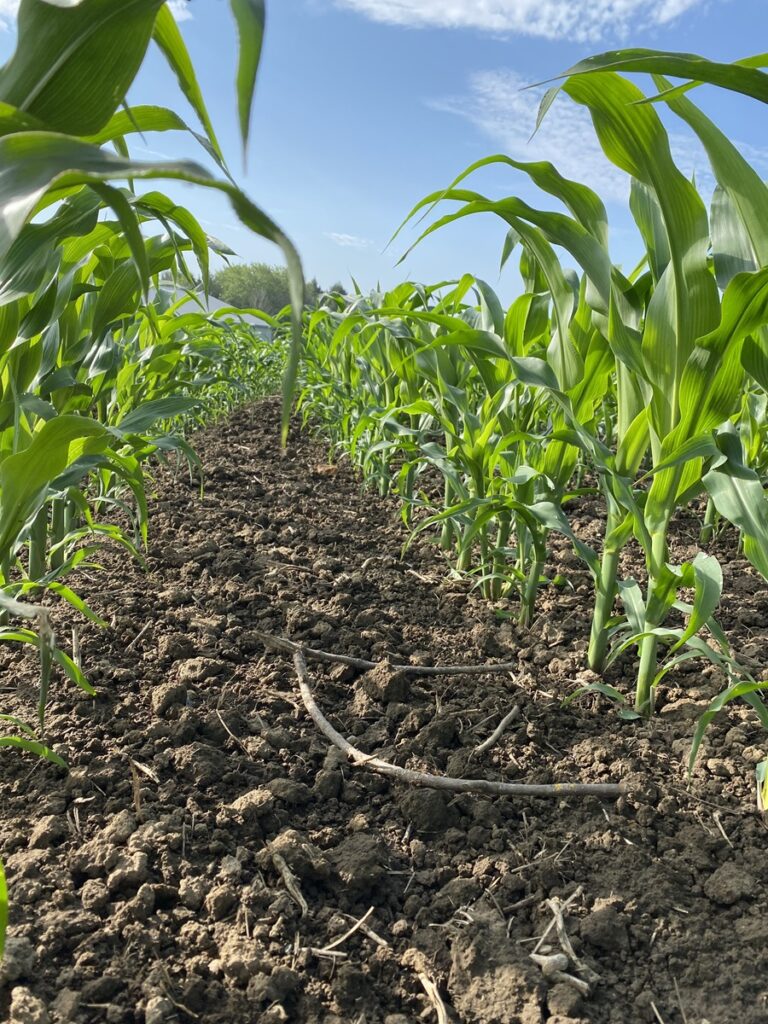
At about the V6 stage (six collars, or 8 leaf stage), the growing point emerges above ground level. The critical stage of ear development is from this stage to about a week before pollination. Ear initiation starts, and then the kernel rows per ear are determined. The number of kernels per row is determined as the ear elongates and is determined before pollination. Stress in the upcoming weeks from lack of nutrients or moisture will reduce grain potential through reduced kernel numbers. Stress can be caused by many factors like too high a population, weed pressure, root pruning from machines or insects, lack of fertility, lack of rainfall, standing water, hail damage, disease, etc.
Rapid growth syndrome has been and can be seen in fields with changes from cool to high heat. It occurs when corn leaves do not unfurl properly, and the whorl becomes tightly wrapped and twisted.
As fungicide timing approaches, be aware of the potential for Tar spot and Gibberella ear rot (which can cause DON in corn). The Ontario Corn Committee has posted the 2023 Ontario Corn Hybrid DON Screening Trials. These trials may be helpful in determining how susceptible hybrids are to Gibberella ear rot and DON accumulation—use them as a tool as fungicide spraying approaches.
Soybeans
Soybean fields are staging from the VE (emergence) up to beginning bloom (R1—plants have at least one flower at any node). Soybean planting is still occurring in areas that struggled to plant earlier this year, and some replants are also occurring.
In the V3 to V5 stages, axillary buds develop into flower clusters near the top of the stem. In the coming days, flowering will begin, starting on the 3rd to 6th nodes and continuing down the stem. At this point, the plant will transition into reproductive stages (R1) while continuing to grow vegetatively.
As resprays occur, be sure to mitigate drift. Both BeDriftAware.ca and the recent Grain Farmers of Ontario GrainTalk webinar with Dr. Jason Deveau have valuable tips when spraying to help mitigate drift.
Agricorp planting deadlines and reporting of final acres for soybeans are all due on June 30.
Cereals
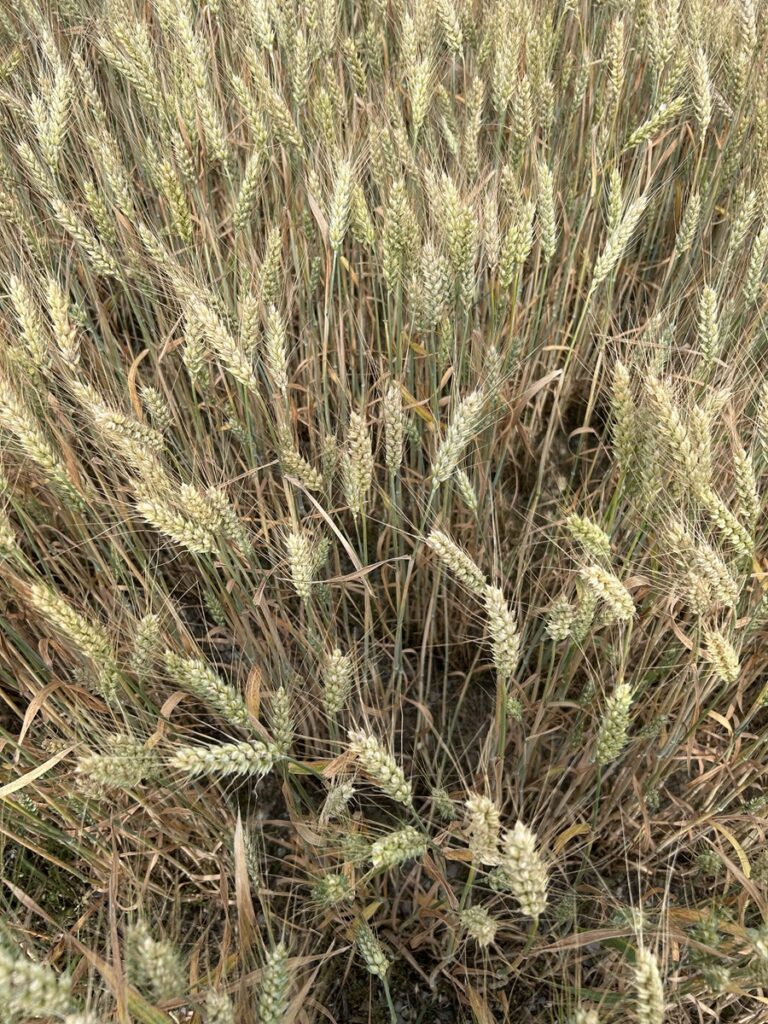
Winter wheat harvest will begin gearing up in the coming days in the deep southwest. As harvest approaches, scout for fusarium-damaged heads in the field. Infected fields should be harvested first to limit continual toxin build-up in case of rain events or delayed harvest. Set the combine correctly to help blow out the lighter infected kernels. Fusarium is showing up at very low levels, sometimes only infecting a few florets on a few plants within a field (this might be due to T3 fungicides being applied at ideal timing for the majority of the field, but some tillers might have pollinated slightly the majority of the field). The incidence of fusarium infections has been reduced over the past 20 years due to genetic improvements and the use of fungicides during pollination (T3 timing) to help control fusarium. This spring, a larger amount of the winter wheat crop was exposed to ideal conditions (think of the disease triangle for fusarium infection: susceptible host + pathogen + favourable environment), but farmer practices have helped to reduce the chance of infection.
Across much of the province, kernel fill is still occurring in the winter wheat crop (GS 73 to GS 87 hard dough/physiological maturity). Prolonged hot, dry weather will limit kernel fill resulting in smaller kernels as the water availability for the crop becomes limited. Kernel abortion and dead heads can be seen as the plant dies rather than matures if moisture becomes too limited during this period (during the hot, dry period of last week this was seen occurring on sandy knolls within fields).
It is imperative to ensure that treated seed does not make its way into grain at harvest. As planting wraps up and harvest nears, ensure that equipment that handled treated seed is ready to handle grain (and cleaned out using proper protocols), with no contamination. Grains or oilseeds contaminated with treated seed or other foreign material put domestic and export markets at risk. Learn more in the Grain Farmers of Ontario Handling treated seed Fact Sheet.
June 20, 2024
There are variable-looking crops, both in stage and appearance, across the province as spring rolls into summer this week. Corn planting has wrapped up, while soybean planting is still progressing. Winter wheat is staging from milk to dough stage, and winter barley harvest is beginning. Heavy rains from pop-up storms have caused some temporary ponding in fields (and possible crusting in newly planted fields).
Corn
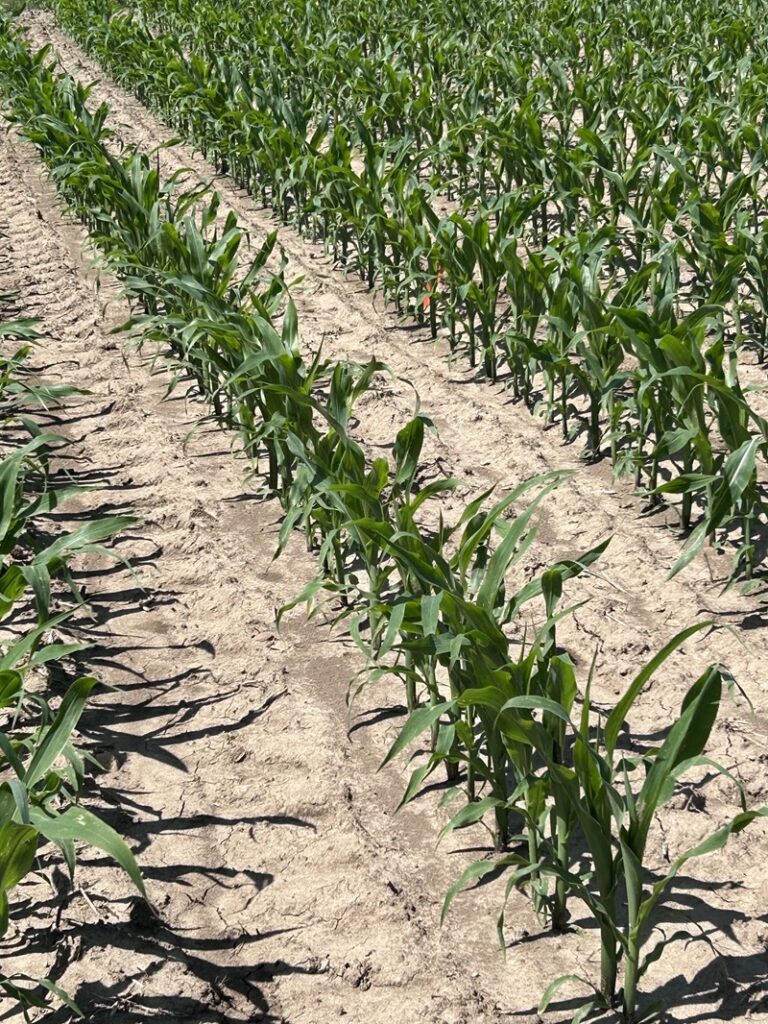
Corn planting is mostly wrapped up as the Agricorp extended deadline for insurance has come to a close; any remaining acres will now almost certainly be transitioned to soybeans. Crop development is occurring rapidly, with heat units accumulating quickly. Lots of corn is between emergence (VE) and V8 stage (9 leaf). V stage refers to the vegetative stage with the counting of collars on the corn stalk. At these early stages, side dressing occurs when field conditions allow in between rains. From V6 to V10, the corn plants will be developing the ear, and at this stage, kernel numbers per row and rows per cob will be determined. Stress in the upcoming weeks from lack of nutrients or moisture will reduce grain potential through reduced kernel numbers.
As corn plants are developing rapidly, plant variability is showing up as evidence of compaction damage from tillage or planting when conditions were too wet. This could be seen as smaller plants, discoloured as purple or yellow as root development is limiting nutrient uptake due to impacted soil.
The province has received consistent rains and rainfall up to this point, along with some ideal temperatures for tar spot development. If it does begin to develop, infection may start showing up in the first couple of weeks of July in fields that have had tar spot in previous years as spores are present locally. Check the bottom of the canopy for these local infections. There are still some variables, but if weather conditions continue with high humidity and leaf wetness, it will encourage the development of the disease. Disease progression will continue depending on the weather received and the spore load coming for infected fields; spores coming from other fields will show infection starting on the top of the canopy. For more info on tar spot and to see what to look for, read our Agronomy Alert. There have already been fields identified with Tar spot in Indiana.
Be on the lookout for black cutworm, as it can cause problems. Fields that do not have insecticide-treated seed or do not have Bt hybrids containing Cry1F or Vip3A should be given priority in scouting. Learn more about what to look for in this Field Crop News article.
Soybeans
Soybean staging is up to the 4th trifoliate in many areas, with some just emerging. Some soybeans are struggling in areas that have had very heavy rains after planting, creating crusting and causing slow emergence; planting is still occurring in some areas.
Be on the lookout for insect pressure, especially on fungicide-only or untreated soybeans.
Cereals
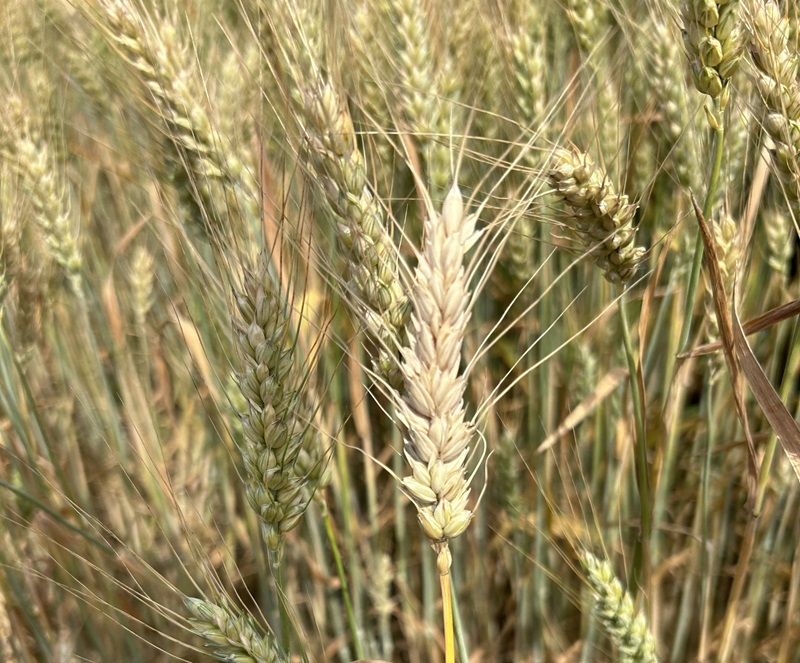
Winter barley harvest has begun.
Spring cereals are in the stem elongation stage.
For winter wheat, stages range from the milk stage (GS 71- kernel watery ripe) to dough stage (GS 87- hard dough). Standability seems good so far in most areas. However, some are seeing some lodging in fields that had high nitrogen (N) rates, in those that had received manure that is traditionally high in N, or in those that have received heavy rains.
As temperatures increase, crop development speeds up. The average temperature range of 19–22 °C is the optimum for anthesis and grain filling in wheat. The high temperatures occurring and expected will impact grain fill. High temperatures also mean high water needs. In general, much of the province has a good supply of moisture in the soil, but this may be tested in the coming days if timely rains do not occur.
Ideal conditions for DON development are also occurring; some fields that saw timely T3 applications are still showing minimum fusarium infection. This is caused by application timing and the timing difference of anthesis within the canopy. Variable field conditions also lead to different pollination timing within the canopy. Fields that are showing Fusarium infection should have the combine adjusted to blow the Fusarium-damaged kernels out the back of the combine (due to their light weight). This will help improve the grading factor.
Be on the lookout for army worm, province-wide, and be prepared to spray as warranted.
Field Crop News houses tools for corn growers
Field Crop News is now the source for the Ontario Corn Nitrogen Calculator, Ontario Corn Replant Decision Aid Tool, Optimum N-Rate Estimator, Ontario Corn Committee Hybrid Selector Tool, Ontario Manure Nutrient Calculator, and the Ontario Crop Residue Value Estimator. These tools were all previously housed on gocorn.net website (which has been replaced by GoCrops.ca).


